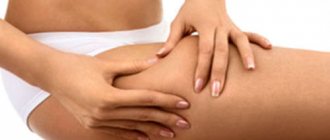In autumn and early winter, temperature changes and cold winds have a negative impact on our body. The immune system weakens and becomes prey for viruses and bacteria. Often in such weather, many people begin to complain of a sore throat.
Many people wonder if it’s possible to go to the bathhouse if you have a sore throat? In fact, first of all, you need to visit a doctor and find out the main reason for the pain. After all, hot air can cause harm. For example, tonsillitis is a disease that absolutely cannot be treated on its own.
How can Hamam help with a sore throat?
A bath for diseases of the upper respiratory tract is permitted depending on the characteristics of the pathology.
It can have a positive or negative effect on the course of the disease. Advantages of the steam room:
- the presence of thick steam plays the role of inhalation, including healing, due to the application of essential oils to the stones;
- it promotes deep warming of the nasopharynx, back, chest, the effect is almost the same as applying a compress;
- the possibility of sweating a lot;
- warming the body to 39 degrees stimulates metabolic processes and activates the body’s defenses, it becomes more resilient to the effects of bacteria and viruses;
- stimulation of the removal of toxins and toxic substances through the pores of the skin;
- production of more leukocytes, which have a detrimental effect on foreign bacteria and viruses;
- the functioning of the respiratory system improves;
- achieving a therapeutic effect when using the right broom.
It is useful to visit the bathhouse in case of minor symptoms of weakness, sore throat, runny nose. Steaming in a hammam if you have a cold is allowed, provided that cold showers and swimming pools are excluded. If the temperature rises, going to the steam room is prohibited.
Inhalation with essential oils
Essential oils have an antibacterial, antiviral effect, relieve coughs, runny nose, relieve sinus inflammation, reduce muscle pain, and increase sweating. You can use them at home in the bathroom or take them with you to the bathhouse.
Oils from these plants will help quickly eliminate the disease. Therefore, in the steam room you need to use:
- 2 drops of thyme essential oil;
- 2 drops of tea tree oil;
- 4 drops lemon oil;
- 1 drop of eucalyptus oil.
You drop drops onto the hot stones and inhale deeply through your nose. You need to exhale through the mouth. Oils not only reduce pain, but also fight infections.
If you have your own sauna or bathhouse with a bathtub or small pool, then you can use the following method. Add the following ingredients to the heated water:
- 5 drops of pine essential oil;
- 4 drops of eucalyptus oil;
- 1 cup sea salt.
Before plunging into the bath, stir the water by hand. After taking water procedures, you need to wrap yourself in a warm blanket and drink a hot glass of milk with honey.
When you come to the bathhouse with a runny nose, you simply need to use therapeutic rubdowns, which will increase sweating and relieve throat irritation. You can rub it with a solution of honey and salt (1:1), you can also use special products purchased in the store.
It’s worth remembering again about the wet steam in the Russian steam room. You can enhance the effect of such inhalation with essential oils made from pine, juniper, fir, eucalyptus, lavender or geranium. The purchased oil must be dissolved in water (10-20 drops per 1 liter), after which, pour it over the walls or use an aromatic evaporator. It is not recommended to spill oil on stones, as it can catch fire, filling the steam room with an unpleasant odor.
The last folk remedy that will alleviate your illness is bath drinks. While in the steam room, the human body loses a large amount of moisture, so in between visits it is necessary to replenish the water supply. To heal, we recommend drinking teas made from chamomile, linden, thyme, elderberry, mint or lemon balm. You can add lemon, raspberry jam and honey to tea in moderation.
Now you can decide for yourself whether you can go to the bathhouse with a runny nose and other symptoms of a cold. Remember that visiting a bathhouse when you are sick is not only a useful, but also a dangerous procedure, so if you feel that the trip could turn out badly, do not risk it.
Is it possible to go to the bathhouse with a sore throat?
If the pain is caused by a sore throat and hyperthermia is observed, the sauna will not be beneficial and will cause harm. The immune system is under stress and may not be able to withstand the effects of high temperatures outside. The stimulating effect on blood circulation and vasodilation can provoke the spread of infection.
For pharyngitis, it is recommended to abandon the procedure for the same reasons, although the course of the disease is milder. Pathology is treated by warming the throat, but UHF is better suited.
For viral infections, you should also not take a steam bath, despite the fact that high temperatures contribute to their death. Warming, of course, helps speed up the healing process, but hammam is not the best option.
It is necessary to take into account that when visiting a steam room, a sick person can become a source of infection for people. ARVI is accompanied by an increase in temperature, and in this case it is definitely not worth visiting. This applies to all acute pathologies.
The bath is not the best option for treating respiratory diseases. To successfully treat them without the risk of complications, it is better to try to undergo therapy under the supervision of a doctor.
Medicinal herbal drinks
When your throat hurts, going to the bathhouse may be the right decision. However, you won’t be able to just relax and have a quiet time. Your first goal is to eliminate pain in the respiratory system. Therefore, take everything you need with you, and most importantly, don’t forget the ingredients for the medicinal tea.
After visiting the steam room with essential oils, when you have lost a lot of liquid, it is recommended to brew medicinal tea. With the aroma of tea you will get rid of not only fatigue, but also sore throat.
The better you warm up and sweat in the steam room, the faster you will be able to say goodbye to the disease. To enhance sweating, therapeutic rubbing with special “sweat-dispersing” agents, which include honey and salt, is especially effective.
You can do this: mix honey with salt (fine table salt or crushed sea salt) in a 1:1 ratio and rub this mixture on the heated skin directly in the steam room. If you have a runny nose or cough, this procedure will work better than any medicine!
In between visits to the steam room, it is necessary to replenish fluid losses. This is necessary to support the body, as well as for a diaphoretic effect in the steam room and more active cleansing of the body. Teas made from linden, thyme, elderberry, chamomile, mint, and lemon balm will help you cope with colds. Honey, lemon, and raspberries can be used as additional anti-cold supplements.
How to make the pain worse and worse
The patient's condition can be worsened by improper treatment. A visit to the hammam for diseases of the upper respiratory tract, accompanied by an increase in body temperature, can worsen the situation and cause complications.
The use of recipes from folk sources can lead to negative consequences, especially without prior consultation with a doctor. This is explained by the fact that they have contraindications and cannot always be combined with the main therapy.
What does a dull, drawing, pinpoint or cutting pain in the throat indicate?
Damaging factors causing dull pain:
- chronic tonsillitis is a pathology of the tonsils in which a small amount of an infectious agent is present (staphylococci, streptococci, Klebsiella, pneumococci, Moraxella, Neisseria, enterococci);
- adenoiditis - pathological hypertrophy of the pharyngeal tonsil, making breathing difficult;
- the primary stage of pharyngitis - the throat becomes red, swollen, painful at rest and when swallowing, and malaise is felt.
Pulling feelings develop under the following conditions:
- cervical osteochondrosis – degenerative-dystrophic lesion of the spine, leading to compression and damage to nerve fibers;
- intervertebral hernia of the neck - protrusion of the nucleus of the intervertebral disc into the canal with damage to the fibrous ring up to rupture;
- dysfunction of the thyroid gland, benign or malignant growth;
- mediastinitis – inflammation of the lymph nodes of the mediastinum.
Point discomfort occurs when there are violations:
- burn of the mucous membrane as a result of the action of a chemical substance, high temperatures, radiation;
- focal proliferation of pathogenic bacteria, staphylococcal, streptococcal, pneumococcal infections are common;
- mechanical damage, trauma, wounds, bruises of soft tissues with damage to the surface layers.
Cutting syndrome appears with dysfunctions:
- acute stage of viral infection - ARVI, colds, laryngitis, influenza, parainfluenza, coronavirus, adenovirus;
- purulent tonsillitis - accumulation of bacteria in the lacunae of the tonsils, the appearance of a large volume of pus in the process of their metabolism, causing intoxication;
- fungal infection, accompanied by a white coating and swelling.
Often an examination is enough to determine the diagnosis. Some diseases will require laboratory and instrumental tests; the symptoms may be similar to each other. For example, the initial stage of viral and bacterial infection.
Purulent diseases
For some throat diseases, even temperatures within 37 degrees are a contraindication for visiting the bathhouse. Such a disease is sore throat. Its purulent forms, follicular and lacunar, are especially dangerous. This is due to the fact that any warming procedures lead to the fact that the inflammatory process can spread to nearby tissues.
Purulent tonsillitis can lead to tonsil abscess and acute lymphadenitis. Visiting the steam room is dangerous for all purulent processes occurring in the body.
Otitis media of the middle ear, often manifested by a sore throat, can be characterized by a purulent course. In this situation, visiting a bathhouse is also dangerous. Purulent processes, the presence of which is a contraindication for going to the bathhouse, include boils and folliculitis.
Is it possible to visit the steam room for diseases such as laryngitis and pharyngitis, which are characterized by inflammatory processes in various parts of the throat? To answer this question, it is necessary to study the humidity parameters in the steam room. Effective treatment for these conditions involves keeping the throat moist at all times. Therefore, the recommended indoor humidity in such cases should be at least 60%.
Procedures that are accompanied by low humidity and hot air lead to dryness of the throat mucosa and the formation of crusts. This further aggravates the pain syndrome.
For these conditions, the dry air of a Finnish sauna, the humidity of which is within 10%, is dangerous.
Viruses and bacteria thrive best in warm, dry air.
Medicinal products used in traditional medicine have become widespread. They are affordable, effective, and such as ginger tea, honey, bananas for a sore throat, pleasant to use, and safe. They often find a positive response among traditional medicine specialists.
Since ancient times, our ancestors visited the bathhouse not only for personal hygiene, but also to strengthen the immune system. In Rus', bath procedures were considered a cure for many diseases. Steam and hot air increase sweating, and along with excess fluid, pathogenic bacteria come out.
A sore throat is a kind of alarm signal from the body that it’s time for you to take a steam bath.
We suggest you read How to get rid of resin in a steam room
Using some traditional methods, the organs of the respiratory system with hot air vapor will relax. You may feel a strong urge to cough - and that's good. A cough will release mucus that contains viruses and infections. Therefore, do not ignore this desire and listen to your body.
Let's look at some methods that will help speed up your recovery.
When do you need to see a doctor urgently, and which doctor will help?
Some abnormalities are treated at home. You will need antiseptics to make you feel better.
In case of the following changes, it is necessary to consult a doctor; without it, treatment will be difficult or will lead to complications:
- The development of a bacterial infection when an antibiotic needs to be determined. Each drug has its own indications for use, side effects, contraindications, and dose selection. Without a recommendation, the patient will not take the factors into account. The doctor will prescribe a bacteriological culture and determine how you feel. Only then will he prescribe the correct medicine.
- Body temperature more than 38 degrees for 3 days. Therapists advise using antiviral medicine in the first three days. If your health does not improve, tests and re-examination will be required.
- Spread of infection. It is localized in one area of the nasopharynx. If there is no treatment or it is incorrect, the pathology spreads deeper. For example, tracheitis, bronchitis, and pneumonia are formed.
- Risk of sepsis. Bacteria move into neighboring tissues. But they should not enter the systemic circulation. Otherwise, severe reactions develop - myocarditis, pericarditis, meningitis, shock, vascular collapse. All of them lead to gradual death without help.
- Body temperature rises to 40 degrees. The condition is especially dangerous for young children. Fever with dehydration causes attacks accompanied by convulsions. This is dangerous for the nervous system, fraught with damage to neurons in the cerebral cortex.
The choice of doctor depends on the area of damage to the body, accompanying symptoms, age:
- pediatrician – examines children if their health worsens;
- therapist – prescribes treatment for patients who have reached the age of majority;
- neurologist – deals with the identification of neurological disorders, elimination of damage to the central and peripheral nervous system;
- cardiologist – provides therapy for complications of the cardiovascular system;
- otolaryngologist - determines therapy for damage to the nasopharynx and hearing organs;
- endocrinologist – diagnoses dysfunction of the endocrine glands (thyroid, parathyroid, pituitary gland, pineal gland, adrenal glands);
- traumatologist – examines the patient when injuries occur and associated complications occur;
- immunologist – corrects the functional state of the immune system in case of frequently developing diseases and low production of lymphocytes;
- infectious disease specialist – prescribes treatment for infections;
- surgeon - prescribes surgery if conservative methods do not help.
Initially, contact a therapist. He prescribes laboratory and instrumental examinations to help assess your well-being. Sends the patient to doctors of other specialties to further study the problem and prescribe medications.
Treatment of pharyngitis with folk remedies: the most effective methods, reviews
The inflammatory process affecting the mucous membrane and lymphoid tissues of the pharynx is called pharyngitis. The disease is accompanied by unpleasant sensations, pain and discomfort. Most often, complex treatment of pharyngitis is carried out with folk remedies and medications.
Classification of the disease
Experts distinguish two forms of pharyngitis - acute and chronic. The first form of the disease is concomitant with influenza and ARVI. In case of chronic pharyngitis, it is classified into atrophic, hypertrophic and catarrhal.
Both of the first types have similar symptoms, so diagnosing a specific form of the disease can only be done after a special examination.
The catarrhal form of pharyngitis is characterized by diffuse venous hyperemia. Only a specialist can make an accurate diagnosis.
Pharyngitis is treated with folk remedies at home in combination with medications.
The acute form of the disease begins quickly. It is caused by infection, as well as unfavorable factors (smoking, exposure to cold). Acute pharyngitis occurs as a concomitant pathology with various infectious diseases or gastrointestinal disorders. This form is most often caused by viruses. About 1/3 of cases are due to bacterial infection.
Causes of pharyngitis
The disease is a consequence of infection with staphylococcus, diphtheria bacillus and streptococcus. It spreads most of all by airborne droplets. The most common causes of pharyngitis include:
- Constant influence of irritants on the pharyngeal mucosa. It could be cigarette smoke, alcohol, or too polluted air.
- Prolonged exposure to air and inhalation through the mouth.
- Influenza or ARVI viruses.
- Candida mushrooms.
Contributing factors also include:
- bad environment;
- diseases of the gastrointestinal tract;
- hormonal imbalance;
- eating very cold or hot food.
The chronic form of pharyngitis occurs if the acute stage is not treated correctly. And also in cases where it is impossible to establish an accurate diagnosis.
To alleviate the condition, the specialist, along with drug therapy, prescribes treatment for pharyngitis with folk remedies.
Symptoms of the disease
When an acute form of pharyngitis occurs, patients develop the following symptoms:
- It is difficult to swallow not only food, but also water. Even swallowing saliva causes severe pain in the throat.
- Constant feeling of a lump in the throat. The patient tries to clear his throat, but nothing works.
- Body temperature may increase, but the indicators are not critical.
The general condition during the acute stage of pharyngitis remains stable, but patients may constantly feel tired. It is caused by minor physical activity.
In the chronic form of the disease, the following symptoms occur:
- constant cough with scanty mucus discharge;
- collection of sputum in the throat, which has a viscous consistency and is not expectorated;
- the patient has to constantly swallow mucus;
- sore throat.
The chronic stage of the disease does not cause an increase in temperature, but due to other symptoms, the patient's sleep is disturbed and irritability appears.
Does treatment with folk remedies have any effect?
Pharyngitis can be successfully treated in various ways. The main thing is to follow the correct recommendations during the treatment of the disease. To treat pharyngitis with folk remedies, the most effective recipes should be prescribed by a specialist.
Good results can be achieved if you use:
- compresses;
- rinsing;
- inhalations and other methods of therapy.
The following symptoms can be reduced:
- soreness;
- redness of the throat;
- temperature increase;
- nasal congestion and rhinitis.
When choosing therapy, the form of the disease plays a huge role. If the acute stage of pharyngitis is treated incorrectly, it can become chronic. And it requires long-term and careful therapy, due to the possibility of various complications.
When treating pharyngitis with folk remedies, it should be taken into account that:
- You need to do inhalations, rinse your throat and use various compresses.
- Products that can relieve swelling and reduce inflammation should be used.
- The patient needs to properly organize the drinking regime. You can drink herbal teas and decoctions in large quantities.
- The patient should try to strengthen the immune system.
By using effective and time-tested recipes, you can get rid of the symptoms of the disease in a short time.
Propolis
There are many folk remedies for the treatment of pharyngitis. To prepare propolis tincture, follow the following sequence:
- Crumble the product into a deep container and pour a small amount of water. Wait a while for all the impurities and wax to rise to the top.
- The propolis will settle to the bottom, carefully collect it and place it in a glass jar. Pour in 1/2 cup of pure alcohol. Leave for a week in a dark place. The jar must be shaken regularly.
- The finished propolis tincture is mixed with glycerin in a 1:2 ratio. Lubricate the mucous membrane of the larynx and nose with the product for 2 weeks. Apply it once a day.
Treatment of chronic pharyngitis with folk remedies in adults using propolis tincture was effective even in the absence of drug therapy.
It is best to use a rinse. And to ensure a good antiseptic effect, a piece of propolis can be chewed for several minutes. The product will effectively clear the throat of pathogenic microflora and eliminate the inflammatory process.
Propolis should be used with caution by people who are allergic to bee products.
Treatment with sea buckthorn oil
The drug must be used to treat pharyngitis from the first days of the disease. There are several methods of sea buckthorn oil therapy:
- Soak a piece of cotton wool with the product and lubricate the inflamed mucous membrane several times a day. Can be mixed with olive oil.
- If severe pain occurs, inhalations lasting up to 15 minutes will be especially effective.
- To treat pharyngitis in the acute stage, first lubricate the mucous membrane. And after a while they do inhalations with sea buckthorn oil.
The substance has wound healing and anti-inflammatory properties. When treating pharyngitis with folk remedies, sea buckthorn oil should be purchased with a normal shelf life. Otherwise, the desired effect will be completely absent.
Honey therapy
With existing methods, the beekeeping product stands out for its special properties. Honey can be used for inhalations and compresses. It can be added to various herbal infusions and teas.
Folk remedies are also used to treat pharyngitis in children. Honey compresses are effective. The beekeeping product is brought to a liquid and warm state using a steam bath. Generously lubricate the child's feet with honey and wrap them in several layers of gauze or bandage. Wear wool socks on top. Exposure time – 30 minutes. The procedures are carried out daily until the child recovers completely.
The most effective recipe for the treatment of pharyngitis in adults is a garlic-honey composition, which is prepared as follows:
- Take 2 large chopped cloves of garlic and 3 tbsp. spoons of buckwheat honey in liquid form.
- Heat the composition over low heat until the components are completely dissolved.
- Add a little boiled water to the composition and boil again.
- The finished product is cooled, filtered and placed in a glass jar.
Take the medicine every hour, a spoonful. A noticeable improvement in the condition is observed after 2 doses.
Adults and children should be given warm milk with honey to relieve the symptoms of pharyngitis. The drink reduces sore throat and dry mouth. Honey is best taken in liquid form.
Inhalations
Many folk remedies have positive properties in the treatment of pharyngitis in adults. Steam inhalations are used to relieve inflammation in the throat and larynx. There are several options for procedures, so you can alternate them:
- Small potato tubers are boiled until tender and steamed twice a day. The duration of the procedure is 20 minutes. This treatment is also used in children. They should breathe over the potato steam, covered with a towel, for 5-7 minutes daily.
- Dissolve soda in hot water and breathe over it for 5 minutes twice a day. The product is taken at the rate of 1 teaspoon per liter of water.
- Steam inhalations with the addition of eucalyptus oil have an excellent effect. The product has a bactericidal and expectorant effect.
Sometimes pharyngitis is treated with steam inhalations with a decoction of bay leaves. As a result of application, a positive result appeared instantly.
Application of herbs
Infusions of medicinal plants have proven themselves to be excellent for the treatment of acute pharyngitis. You can use them to gargle. After use, pain decreases, inflammation is relieved and the general condition of the patient is alleviated. The following rinsing infusions have an effect as folk remedies in the treatment of pharyngitis in adults:
- Mix chamomile, oak bark and calendula in a tablespoon. The mixture is poured with a liter of hot water. Infuse and gargle every 2-3 hours.
- Pour a tablespoon of St. John's wort into a glass of boiling water and leave. Strain and add a teaspoon of propolis tincture to the composition. Rinse twice a day.
- Add a tablespoon of sea salt to 0.5 liters of hot water. Rinse your mouth 5 times a day.
To improve the general condition, use rosehip decoction. It can be drunk warm. Infusions of other medicinal herbs can be added to the decoction.
For the treatment of atrophic pharyngitis with folk remedies, the following recipes are suitable:
- Pour 1/2 cup of anise seeds into a glass of water. Boil for 15 minutes. Add 50 g of honey and a spoonful of cognac. Drink a tablespoon every half hour.
- For inhalation, decoctions of pine and thyme buds have a special effect.
Herbs are excellent remedies for getting rid of any stage of pharyngitis. The dosage should be determined individually for each patient, based on his state of health.
Reviews
Evaluations of folk remedy therapy for pharyngitis are mostly positive. Thanks to timely treatment, the symptoms of the disease quickly disappear and the patient feels relief. This type of therapy also helps children.
According to reviews, treatment of pharyngitis with folk remedies is carried out quickly and effectively. Along with medications, doctors also prescribe decoctions of medicinal herbs. You can drink them as tea or gargle.
Honey has a special effect for the treatment of pharyngitis. It is added to tea, used for inhalations and compresses.
Top medications to relieve sore throat, painkillers
After examination and diagnostic tests, the diagnosis is determined. The list of medications required to improve well-being depends on it.
The top commonly prescribed medications are:
- Antiseptic sprays. Tantum Verde, Strepsils, Panavir, Miramistin, Octenisept, Septolete, Cameton. The products contain antiseptic and antibacterial substances that destroy bacterial flora and relieve inflammation. If the feeling is unbearable, use medications containing an anesthetic component (lidocaine, novocaine, procaine).
- Antiseptic rinse solutions. Furacilin, Chlorhexidine, Septomirin, Orasept, Hexoral, Rotocan, Malavit, Stomatidin. The products wash away pathogenic microflora from the mucous membrane and prevent it from multiplying for a long time. If there are no microbes, inflammation stops and discomfort disappears.
- Herbal rinse. Brew chamomile, calendula, string, viburnum bark, sage, coltsfoot, St. John's wort. Oak bark, which has tanning properties, helps. Make the solution strong.
- Lollipops. Grammidin, Faringosept, Agisept, Doctor Mom, Suprima-ENT, Lizobakt, Larry-plus. Soften the irritated area, destroy the pathogen. Used when rinsing cannot be used. For example, while sleeping, at work.
- Antibiotics. Use cephalosporin, tetracycline, penicillin group, aminoglycosides, chloramphenicol, macrolides, carbapenems. The most common are Amoxiclav with clavulanic acid, Sumamed, Cefazolin, Erythromycin, Azithromycin, Lincomycin, Imepenem, Cefpir. They are prescribed when the nature of bacterial colonization has been proven. Bacteriological culture of sputum discharge from the nasopharynx is carried out. The exact type of microorganism and the antibiotic to which it is highly sensitive are identified.
- Analgesics in tablets. They drink Analgin, Baralgin, Pentalgin. The action is based on reducing the pain impulse transmitted to the main part of the nervous system. The drugs have fewer side effects than other painkillers.
- Non-steroidal anti-inflammatory drugs. Nurofen, Ketorol, Ketoprofen, Nise, Nimesil, Ibuprofen, Diclofenac. The action is based on blocking the inflammatory process. The activity of cyclooxygenase, arachidonic acid, and prostaglandins is inhibited. Heat and inflammation are eliminated. In mild cases, tablets are used, in severe cases, injections are used. The intake is carried out for no more than 7 days, otherwise side effects will form for the gastrointestinal tract with the risk of an inflammatory process, including ulcers.
All medications are used in a limited course. If the effect does not occur for 3-4 days, make an appointment for the next appointment.
Preventive measures to avoid sore throat
It is easier to carry out prevention than long-term treatment.
The following techniques are used:
- frequent hand washing with bactericidal soap;
- if it is not possible to wash the brushes, use wet wipes, antiseptic gels and sprays;
- surgical removal of overgrown tonsils, which make breathing difficult and often become inflamed;
- lack of interaction with infected people;
- avoiding visiting crowded places during the season of increased spread of diseases (autumn, winter);
- use of warm clothes in accordance with the temperature regime (you cannot overcool or insulate);
- using a mask when visiting a clinic or inpatient medical facility;
- physiotherapy – magnetic therapy, electrophoresis, heating, ultraviolet irradiation;
- use of multivitamins (Alphavit, Aevit, Actimmune, Centrum, Complivit) if there are not enough substances in the body (especially vitamins C, D);
- proper nutrition, food contains vitamins, microelements, minerals required for the normal functioning of internal organs (vegetables, herbs, fruits, meat, milk are required);
- hardening procedures - visiting a bathhouse or sauna, swimming in a pool, contrast shower, eating ice cream;
- preventive examination by a doctor every 6 months;
- periodic laboratory tests - general blood and urine tests, bacteriological culture of a nasopharyngeal smear;
- drinking water at least 2 liters per day – helps remove toxins, pathogens, and their metabolites from the body;
- walks in the open air;
- playing sports in accordance with your health condition (physical therapy, yoga, Pilates, running).
Preventative measures will not completely eliminate the risk of disease. This is especially true for young children. Their body contains a small amount of antibodies that fight antigens. Immunity is acquired gradually, after contact with pathogenic microorganisms. Taking precautions reduces the risk of severe disorders.
It is forbidden to use antibiotics for prevention. Otherwise, bacteria will develop resistance to the active substance. An irreparable superinfection will appear.
What does a sudden sore throat mean?
When an infectious process occurs, the first signs of immunity appear. This indicates the activation of the following mechanisms:
- the antigen penetrates the oral cavity, settles on the mucous membrane of the larynx, pharynx, which leads to increased immunity, penetration of the microorganism into the intercellular substance and bloodstream;
- a large number of leukocytes are released and migrate to the affected area;
- immune cells produce inflammatory mediators (bradykinin, histamine), leading to dilation of the lumen of the vessel, release of exudate, pain, swelling, and redness.
The reaction persists until the pathogen is eliminated, or the immune system ceases to be activated in the affected area.
In most cases, health deteriorates before the disease develops. There is pain, a sharp loss of strength, malaise, and drowsiness.
There are cases when pain develops abruptly. Bacteria are concentrated in the tissues of the tonsils for a long time, so there is no immediate response from the immune system.
It appears when there is a large area of pus affecting the nerve fibers. A person falls asleep healthy, wakes up with severe pain in the nasopharynx and associated symptoms.
If signs are observed in a child, this indicates an exacerbation of adenoiditis. The immune tissue grows, making the normal breathing process difficult. This causes frequent colds. Chronic tonsillitis is observed.
During night sleep, snoring occurs due to the difficulty in the passage of oxygen in a lying position. Physiotherapy and symptomatic treatment will help eliminate the condition. If there is no effect, surgical removal of the adenoids is prescribed.
Remedy No. 4. Bath medicinal drinks
When you have a cold, if not only your throat hurts, but also your head, your whole body aches, using a broom can cope with many symptoms.
Making the right choice:
- Broom made of coniferous plants. It can be spruce, fir or juniper. With its use, you are guaranteed to disinfect the air in the steam room and improve sweating.
- Linden broom. Relieves fatigue, calms irritability.
- Birch broom. Removes mucus from the respiratory tract, improves sweating.
- Eucalyptus broom. Kills bacteria in the air, reduces cough and sore throat. It is also useful to breathe over a steamed broom. To do this, you need to pour boiling water over it and press it to your face. Inhale the vapors with deep breaths for 3-5 minutes.
The choice is yours, but as you can see, a eucalyptus broom will do just fine.
When treating a cold in a Russian bath, you should definitely take a steam bath with a broom. This will increase blood circulation in the capillaries, activate sweating, speed up metabolism, and help flush out impurities and toxins from the pores. Moreover, it is important to choose the “right” broom:
- Linden broom – accelerates sweating, calms the nervous system.
- Birch broom – promotes the removal of mucus from the bronchi, eliminates pain in muscles and joints.
- Coniferous broom (juniper, fir, spruce) - stimulates sweating and disinfects the air in the steam room.
- Eucalyptus broom – cleanses the air of pathogens, eliminates cough, runny nose, and sore throat. It is especially useful to “breathe” with a eucalyptus broom. To do this, you need to steam a dry broom, and then press it to your face and breathe in the emanating ethereal vapors. Everything will take about 5 minutes, and you will feel relief from the painful condition immediately.
If you decide to cure yourself of a cold in a Russian bath, use a broom for massage. Its use will speed up blood circulation, increase sweating, improve the elimination of waste and toxins, speed up metabolism and relieve muscle tension. Brooms can be made from branches of different wood, on which its healing properties depend.
We recommend using one of the following steam room brooms:
- A linden broom will allow you to relax and also increase sweating;
- A coniferous broom can be made from fir, juniper or spruce branches. This broom improves sweating, disinfects the air and fills the steam room with a pleasant aroma.
- The birch broom is the most popular among steam room guests. It promotes the rapid removal of phlegm and relieves pain in muscles and joints.
- A eucalyptus broom is better than all other options for those who come to the steam room to fight ARVI. Eucalyptus will destroy harmful microorganisms and relieve you of cough, runny nose and sore throat. You can do eucalyptus inhalation for the respiratory tract. To do this, brew a broom in hot water, then press it to your face and inhale the air filled with eucalyptus vapor.










